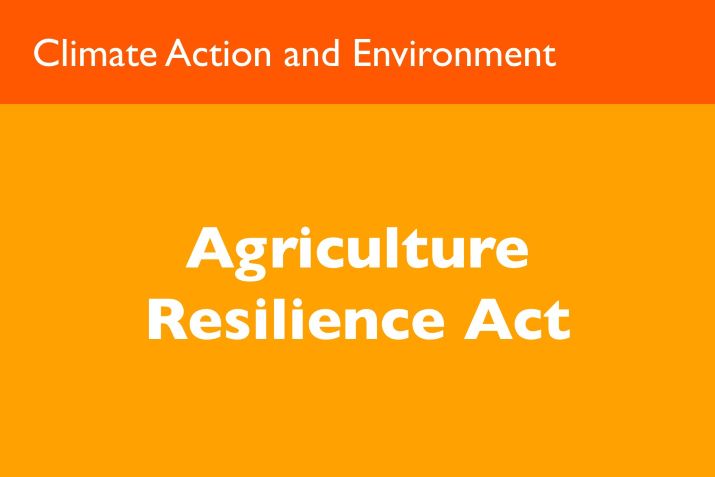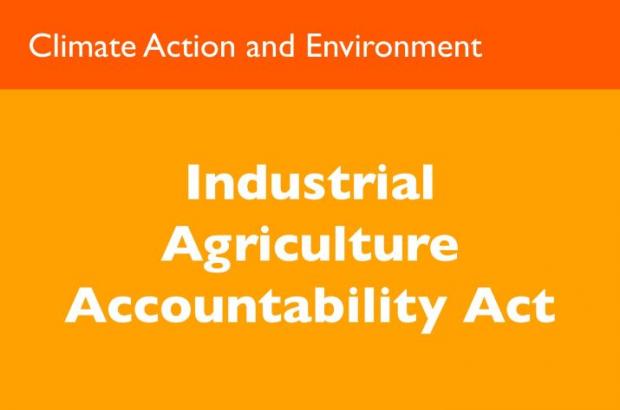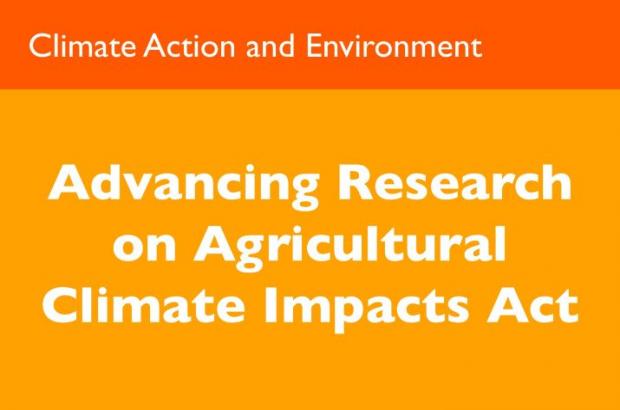Article
Agriculture Resilience Act (ARA)

What it does
If Congress passes it, this bill would set a bold vision of reaching net-zero greenhouse gas emissions in U.S. agriculture by the year 2040, and gives farmers the tools they need to do so. To reach net-zero agricultural emissions within the next 20 years, the ARA focuses on six concrete policy areas and offers solutions rooted in science that are farmer-driven. These goals include:
- Increasing Research: ensuring existing agriculture research programs prioritize climate change research, increase funding for USDA’s Regional Climate Hubs, support public breed and cultivar research, and create a new SARE Agricultural and Food System Resilience Initiative for farmer and rancher research and demonstration grants.
- Improving Soil Health: Creating a new soil health grant program for state and tribal governments, authorize USDA to offer performance-based crop insurance discounts for practices that reduce climate risk, expand the National Agroforestry Center by authorizing three additional regional centers, and provide more technical assistance and flexibility in USDA conservation programs to support climate-smart practices.
- Protecting existing farmland and supporting farm viability: increasing funding for the Local Agriculture Market Program to help keep local farms profitable and create a new subprogram for farm viability and local climate resilience centers to help farmers reach new markets. The bill would also increase funding for the Agriculture Conservation Easement Program to make farmland affordable for the next generation.
- Supporting pasture-based livestock systems: creating a new alternative manure management program to support an array of livestock methane management strategies and establish a new grant program to help small meat processors cover the costs associated with meeting federal inspection guidelines.
- Boosting investments in on-farm energy initiatives: Increasing funding for the Rural Energy for America Program to prioritize low-emissions electrification projects and direct USDA to study dual-use renewable energy and cropping or livestock systems.
- Reducing food waste: standardizing food date labels to reduce consumer confusion about the shelf life of foods, create a new USDA program to reduce food waste in schools, and increase federal support for food waste research and outreach, composting, and anaerobic digestion food waste-to-energy projects.
Who supports this bill?
The ARA is a bicameral bill, which means it has some support in both the Senate and the House of Representatives. The bill was introduced by Representative Chellie Pingree and Senator Martin Heinrich. In the Senate, this bill is referred to as S.1016 and these Senators are already supporting the bill. In the House, this bill is referred to as H.R.1840 and these Representatives are already supporting the bill.
See what leading environmental and sustainable farming groups have to say about the bill.
Want to support this bill?
If your Senators and House Representative aren’t already on the list of cosponsors for the bill:
- Ask your two Senators to “cosponsor the Agriculture Resilience Act, S. 1016.”
- Ask your House Representative to “cosponsor the Agriculture Resilience Act, H.R. 1840.”
If your elected officials are already supporting the ARA, you can always contact them to thank them and help spread the word among your networks.
Resources
If you’d like to learn more about the Agriculture Resilience Act, you can:
- Find instructions for calling or writing your Senators and Representative (tip: enter your address)
- Track the ARA’s progress on Congress.gov or GovTrack
- Learn why organic farmer and U.S. Congresswoman Chellie Pingree introduced this bill (video and press release)
- Read the full bill text
See more bills worthy of your support in the 2023 Farm Bill.













